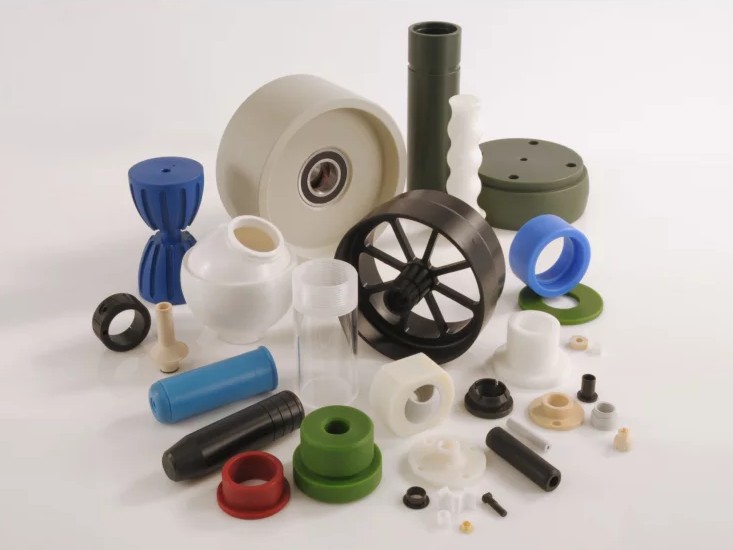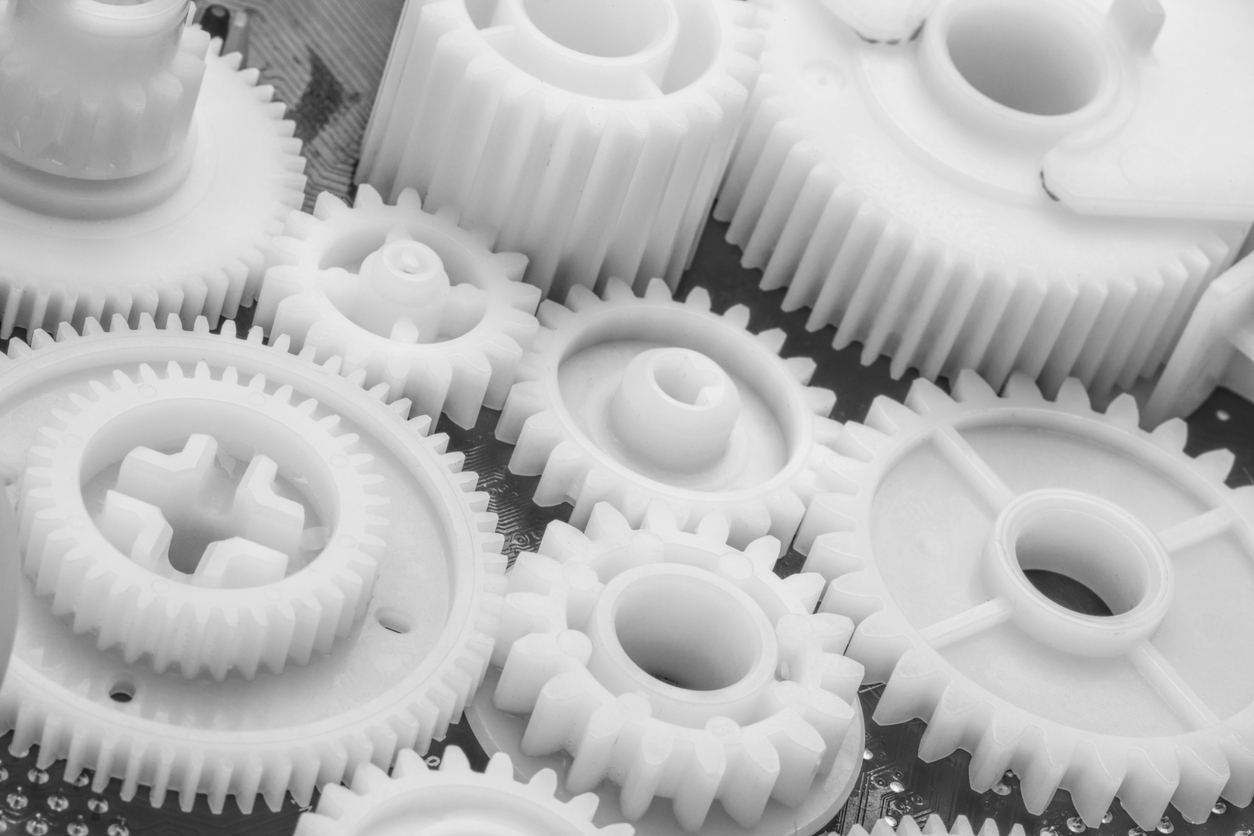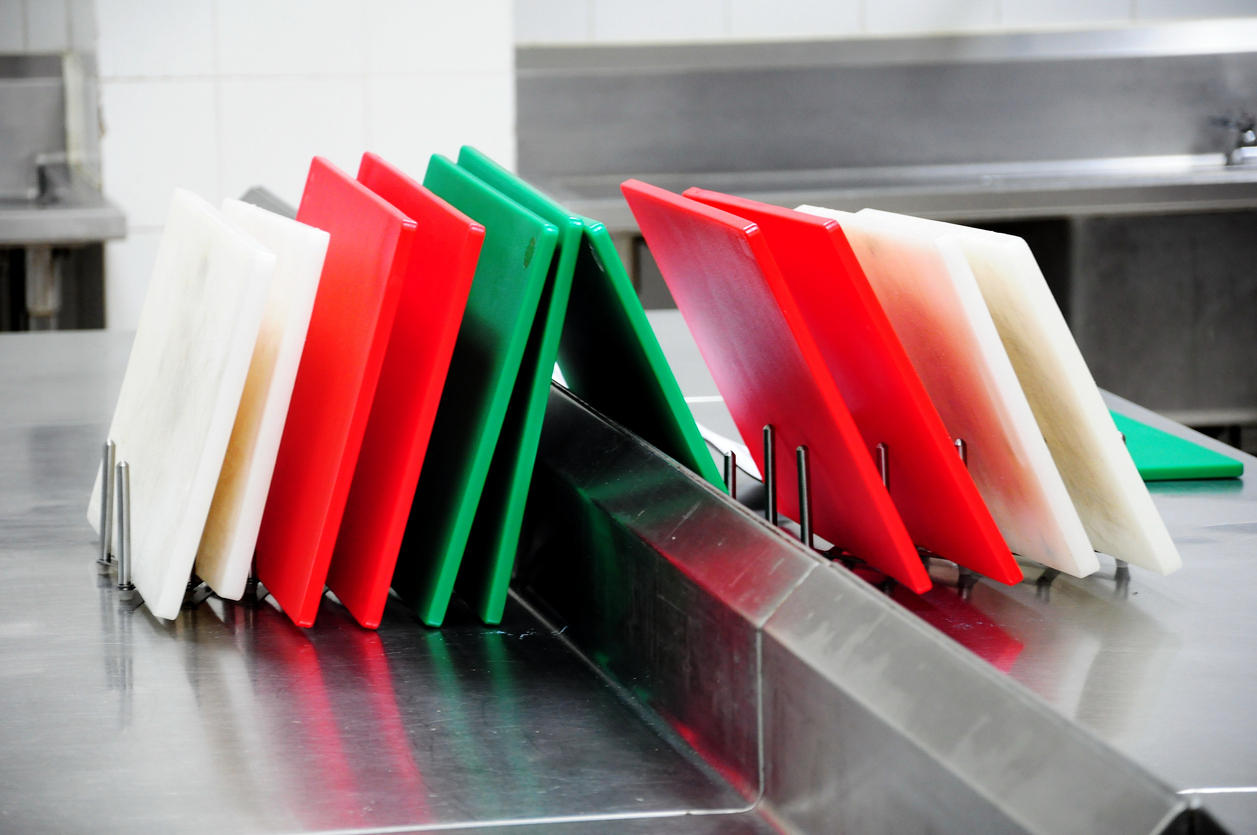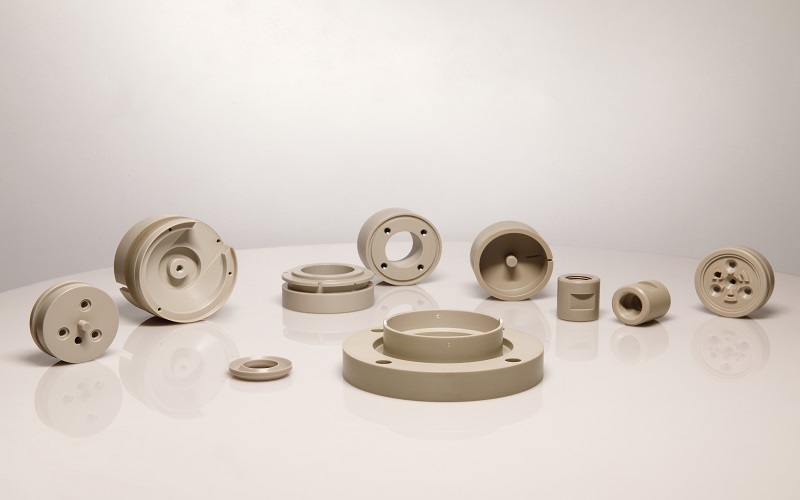Engineering Plastics: A Guide to Acetal, Nylon, Polyethylene (PE), Polypropylene (PP) and PEEK
Published on: 15/05/2025

At Simply Plastics, we go beyond everyday plastics by offering a comprehensive range of engineering plastics. These high-performance materials are perfect for demanding industrial, mechanical, and commercial applications. This guide will introduce you to our selection of engineering plastics, their key features, common uses, and a useful comparison table to help you choose the best solution for your next project.
What are engineering plastics?
Engineering plastics are a group of materials designed to perform where traditional plastics and metals, fall short. These high-performance plastics can often replace metal in machine parts thanks to their excellent strength, stiffness, and resistance to wear, heat, and chemicals. They’re widely used in engineering and industrial applications where durability and reliability are essential.
In this guide, we will cover the engineering plastics we supply:
What is Acetal Copolymer (POM-C)?
Acetal, also known as Polyoxymethylene Copolymer (POM-C), is a low-friction, wear-resistant plastic ideal for precision machining. Due to its low moisture absorption, it maintains its shape and accuracy even in humid environments.
Common uses:
- Seals and gaskets
- Food processing equipment
- Marine equipment
- Medical instruments
- Filling machinery components
We offer acetal copolymer in both sheet and rod form, available in natural, black, and blue (food grade) finishes.
What is Nylon 6 (Polyamide)?
Nylon 6 (or Polyamide 6 or PA6) is is a versatile, high-strength engineering plastic known for its excellent wear resistance, low friction, and durability. Ideal for industrial and mechanical applications, it offers outstanding toughness and chemical resistance.
Nylon 6 Cast
Nylon 6 Cast is produced through a casting process that gives it higher strength, hardness, wear resistance, and dimensional stability compared to extruded Nylon 6, making it ideal for heavy-duty, high-load applications. While cast nylon is harder and stronger, its machinability is excellent due to lower internal stress.
Nylon 6 Extruded
Nylon 6 Extruded, manufactured by melting and extruding pellets, is slightly softer, more flexible, making it better suited for smaller, detailed parts or where impact resistance is needed. Extruded Nylon can be harder to machine that it's Cast alternative, it can warp or create stringy edges.
Common uses for Nylon 6 Extruded and Cast:
- Gears and sprockets
- Bushes
- Bearings
- Machined parts

What is Nylon Cast LFX Oilon?
LFX Oilon Nylon 6 is a self-lubricating, wear-resistant cast nylon with low friction, which is in an oil-filled green colour. It's an ideal choice for high-load, high-speed applications like bearings, gears, and wear pads, where reduced friction, improved performance and lower maintenance costs are important. Nylon Cast LFX Oilon is commonly used for conveyor parts.
We supply Nylon in both extruded and cast forms, available in sheet and rod options in natural and black finishes and Nylon LFX Oilon sheet and rod.
What is Polyethylene (PE)?
Polyethylene is a durable, versatile engineering plastic renowned for its high impact strength, excellent chemical resistance and low moisture absorption. It is ideal for a wide range of industrial and mechanical applications, as it offers exceptional wear resistance and is highly machinable.
PE300
High-density Polyethylene (HDPE) or PE300 is a durable, lightweight material suitable for general-purpose applications like cutting boards and tanks.
Common uses:
- Food processing
- Automative
- Leisure
- Food industry (tank fabrications)
- Boat construction
- Medical applications
- Water pumps
- Landfill applications
PE500
High Molecular Weight Polyethylene (HMWPE) or PE500 has a higher molecular weight, offering better wear resistance and impact strength, making it ideal for more demanding environments and heavy-duty wear components.
Common uses:
- Food chopping boards
- Leisure equipment
- Conveyor components
- Dairy industry
- Ice rinks

We offer HDPE300 (High Density Polyethylene or HDPE) and PE500 (High Molecular Weight Polyethylene or HMWPE) in sheet and rod forms in a range of colours.
What is Polypropylene (PP)?
Polypropylene is a lightweight, rigid, and highly chemical-resistant plastic, making it ideal for industrial and commercial applications. It offers excellent impact strength, low moisture absorption, and durability. We supply Polypropylene Copolymer (PPC) and Polypropylene Homopolymer (PPH) in sheet and rod form, in a range of colours, including leather grain and pinseal finishes.
PPC (Polypropylene Copolymer)
Polypropylene Copolymer Sheet (PPC) contains a mix of propylene and ethylene, making it tougher, more impact-resistant and better suited for lower temperature applications compared to PPH.
Common uses:
- Chemical tanks
- Protective cladding
- Advertising and signage
- Packaging
- Dairy boards
- Vehicle linings
- Prosthetics and orthotics
- Agricultural feeders

PPH (Polypropylene Homopolymer)
PPH is a harder, stronger and more rigid material, offering better chemical resistance and higher temperature tolerance, but it can be more brittle than PPC. It also offers better chemical resistance and high-temperature tolerance.
Common uses:
- Pumps
- Valves
- Gaskets
What is PEEK (Polyetheretherketone)?
PEEK is a premium-grade engineering plastic that performs exceptionally well in high-temperature and high-stress environments. It combines mechanical strength, chemical resistance and flame retardance, making it suitable for demanding industrial and aerospace applications.
Common uses:
- Bearing, seals and o-rings
- Pump, compressor and piston parts
- Valves
- Aerospace and automotive parts
- Medical devices
- Oil and gas industry

We supply PEEK sheet and rods.
Engineering Plastics Comparison
To help you make an informed decision, here's a quick comparison of the key features of each material:
|
Property |
Acetal Copolymer (POM-C) |
Nylon (PA) |
Polyethylene (PE) |
Polypropylene (PP) |
PEEK |
|
Machinability |
Excellent |
Good |
Fair |
Fair |
Moderate |
|
Moisture Absorption |
0.8% |
9% (LFX – 6.3%) |
<0.01% (PE500) |
- |
0.45% |
|
Dimensional Stability |
Excellent |
Moderate |
Fair |
Fair |
Excellent |
|
Wear Resistance |
High |
High |
Moderate |
Moderate |
Very High |
|
UV Resistance |
Black variant only (High) |
Moderate |
HDPE - High |
Low |
High |
|
Chemical Resistance |
Excellent |
Good |
Excellent |
Excellent |
Outstanding |
|
Maximum Service Temperature |
Up to 100°C |
Up to 90°C |
Up to 80°C |
Up to 100°C |
Up to 250°C |
|
Temperature range |
-50°C to 100°C |
-40°C to 70°C LFX: -20°C to 90°C |
PE300: -50°C to 80°C PE500: -80°C to 80°C |
PPC: -20°C to 100°C PPH: 0°C to 100°C |
-50°C to 250°C |
|
Food-Safe Compliance |
Yes (Blue Food Grade only) |
Yes (Natural only) |
Yes |
Yes |
Yes |
|
Cost |
Moderate |
Low |
Low |
Low |
High |
|
Specific gravity |
1.41 |
1.14 |
0.95 |
PPC: 0.91 PPH: 0.90 |
1.31 |
|
Fire performance |
HB (UL 94) |
HB (UL 94 - 3mm Thickness) |
HB (UL 94) |
B2 (DIN 4102) |
V-0 (UL 94) |
If you need further help choosing the right material, please email us at [email protected] or call 01206 638056.
Why Order Engineering Plastics from Simply Plastics?
At Simply Plastics, we don’t just offer high-quality materials; we provide precision-cut plastics backed by outstanding customer service. With over 30 years of expertise in CNC plastic fabrication, we’re committed to delivering top-tier solutions for your project needs. From custom parts to off-the-shelf products, we ensure the highest standards of quality and precision.
Our engineering plastics range includes Acetal, Nylon, Polyethylene, Polypropylene, and PEEK in sheet and rod forms, in various colours and finishes, ensuring you get the perfect material for your specific needs.
Frequently asked questions
The main difference between Polypropylene Copolymer (PPC) and Polypropylene Homopolymer (PPH) lies in their chemical structure. PPH is made from a single monomer (propylene), resulting in a stiffer, stronger, and more chemically resistant material with a higher melting point. Whereas, PPC is made from 2 or more monomers (propylene and another like ethylene), which leads to increased flexibility, impact resistance, and toughness, but with a lower melting point.
Yes, polypropylene is generally considered waterproof. Its tightly packed structure of its molecules causes water to slide off.
In our Engineering Plastics range, PEEK has the highest temperature tolerance of 250°C.
PEEK can be stronger than some metals, especially when it comes to strength-to-weight ratio. Its high performance qualities allows PEEK to replace metals in engineering components.
Yes, PEEK is waterproof and has low water absorption, even in high humidity environments.
The main difference lies in how the material is manufactured. Nylon 6 Cast is stronger, tougher and has better wear resistance, whereas Nylon 6 Extruded is softer, easier to machine and more flexible.
Both forms of Nylon 6 (cast and extruded) are not fully waterproof, they are hygroscopic, meaning they naturally absorb moisture from the environment. Whilst they don't dissolve or degrade in water, the absorbed moisture can affect their performance and dimensions, especially in precision applications. Nylon 6 can absorb 2-3% by weight at typical room humidity or as much as 8-9% by weight at full saturation.
Nylon 6 is generally difficult to bond and would need special adhesives

 {{product.colours}} Colours
{{product.colours}} Colours